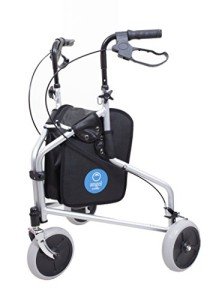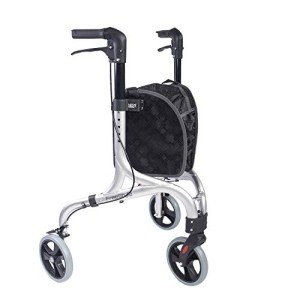lightweight-walker0605
lightweight-walker0605
What’s The Job Market For Handicap Walker Professionals?
Understanding Handicap Walkers: Types, Benefits, and Usage
Handicap walkers, likewise frequently called mobility walkers or just walkers, function as important aids for individuals with mobility obstacles. These gadgets provide physical assistance and stability, enabling users to walk more with confidence and individually. This short article dives into the different types of handicap walkers, their benefits, and essential factors to consider when selecting one.

What is a Handicap Walker?
A Handicap Walker (why not find out more) is a device designed to assist people who have problem walking due to age, disease, or impairment. Walkers assist users preserve their balance, avoid falls, and recuperate mobility. Unlike walking canes, which offer very little assistance, handicap walkers typically use a broader base of stability, making them ideal for more substantial mobility challenges.
Kinds Of Handicap Walkers
Handicap walkers come in various styles, designed to fulfill the unique needs of users. Below is a breakdown of the most common types:
| Type of Walker | Description | Ideal User |
|---|---|---|
| Standard Walker | A lightweight frame that needs lifting to move. Usually has rubber ideas for traction. | Those who can lift the walker and have moderate balance issues. |
| Wheeled Walker | Functions two wheels at the front, enabling simpler mobility without lifting. | Users who can preserve stability and require more assistance while walking. |
| Rollator Walker | Similar to wheeled walkers however consists of hand brakes and a seat for resting. | Individuals requiring a portable resting option with improved mobility. |
| Bariatric Walker | Specifically developed for much heavier people, offering strengthened frames and larger hand grips. | Heavier users requiring extra assistance and stability. |
| Kid Walker | Custom-made models for kids to aid in their development and mobility. | Kids with developmental hold-ups or mobility obstacles. |
Benefits of Using a Handicap Walker
Many users discover that handicap walkers substantially improve their lifestyle. Here are some benefits:
1. Increased Stability
Handicap walkers supply a sturdy support structure, which helps avoid falls and improves users’ self-confidence when moving.
2. Improved Mobility
Walkers make it simpler for individuals with mobility constraints to navigate stairs, uneven surface areas, and other challenging environments.
3. Self-reliance
Utilizing a walker allows individuals to perform daily activities individually, whether it’s walking around the home or shopping.
4. Discomfort Relief
Walkers enhance posture and distribute weight more equally, possibly easing discomfort in joints and muscles during motion.
5. Social Engagement
By assisting in mobility, walkers enable users to get involved more actively in social occasions, household events, and community activities, cultivating a sense of belonging.
Crucial Considerations When Choosing a Walker
Selecting the right handicap walker is vital for ensuring safety and comfort. Below are crucial aspects to think about:
-
User’s Height: Walkers been available in different heights. It’s necessary to choose one that permits the user to stand upright with a minor bend in the elbows when holding onto the handles.
-
Weight Capacity: Assess the weight capability of the walker, especially for bariatric choices, to ensure it fits the user’s requirements.
-
Portability: If the walker will be utilized frequently in numerous areas, consider models that can be easily folded or transported, such as rollators.
-
Features: Some walkers include extra features like cushioned seats, storage baskets, and adjustable deals with. Examine which functions are most helpful for the user.
-
User Preferences: The person’s comfort and choices must also play a substantial role in the selection. Checking different models might help identify the best fit.
How to Use a Handicap Walker Effectively
Utilizing a handicap walker properly ensures safety and maximizes its benefits. Follow these actions for safe use:
- Adjust the Height: Make sure the walker is changed to the proper height for the user.
- Stabilize the Walker: Place the walker in front while ensuring all 4 rubber ideas or wheels touch with the ground.
- Use Proper Techniques: Move the walker forward about one step length, and after that enter the walker while keeping the weight well balanced.
- Maintain Good Posture: Stand straight and utilize the walker for assistance, not leaning exceedingly on it.
- Practice Regularly: Encourage users to practice walking with the walker regularly, assisting to construct self-confidence and improve balance.
Frequently Asked Questions (FAQs)
1. What is the distinction in between a standard walker and a rollator?
Standard walkers require the user to raise them with each action, while rollators have wheels and enable the user to press them forward without lifting. Rollators likewise generally include brakes and may have a seat.
2. Are handicap walkers covered by insurance coverage?
Coverage for handicap walkers can differ based upon a person’s insurance strategy. It is recommended to consult the service provider for specific information regarding protection and any needed documents required.
3. Can kids use handicap walkers?
Yes, there are walkers designed specifically for kids that accommodate their developmental needs. It’s important to pick a model that is age-appropriate and supplies the needed assistance.
4. How do I keep my walker?
Frequently check the walker for wear and tear, consisting of the grips and wheels. Clean the walker as required and make sure all components are operating appropriately for safety.
5. When is it time to stop using a walker?
This varies by individual. Users need to seek advice from their doctor to examine mobility improvements and discuss whether transitioning to a different mobility aid or moving without help is suitable.
A handicap walker can be a transformative tool for people with mobility obstacles, offering them higher stability, independence, and improved lifestyle. By understanding the various types, benefits, and essential considerations in picking a walker, individuals can make informed choices that line up with their unique requirements and lifestyle. Whether for rehabilitation, aging with dignity, or handling disabilities, handicap walkers play a vital function in promoting mobility and wellness.



